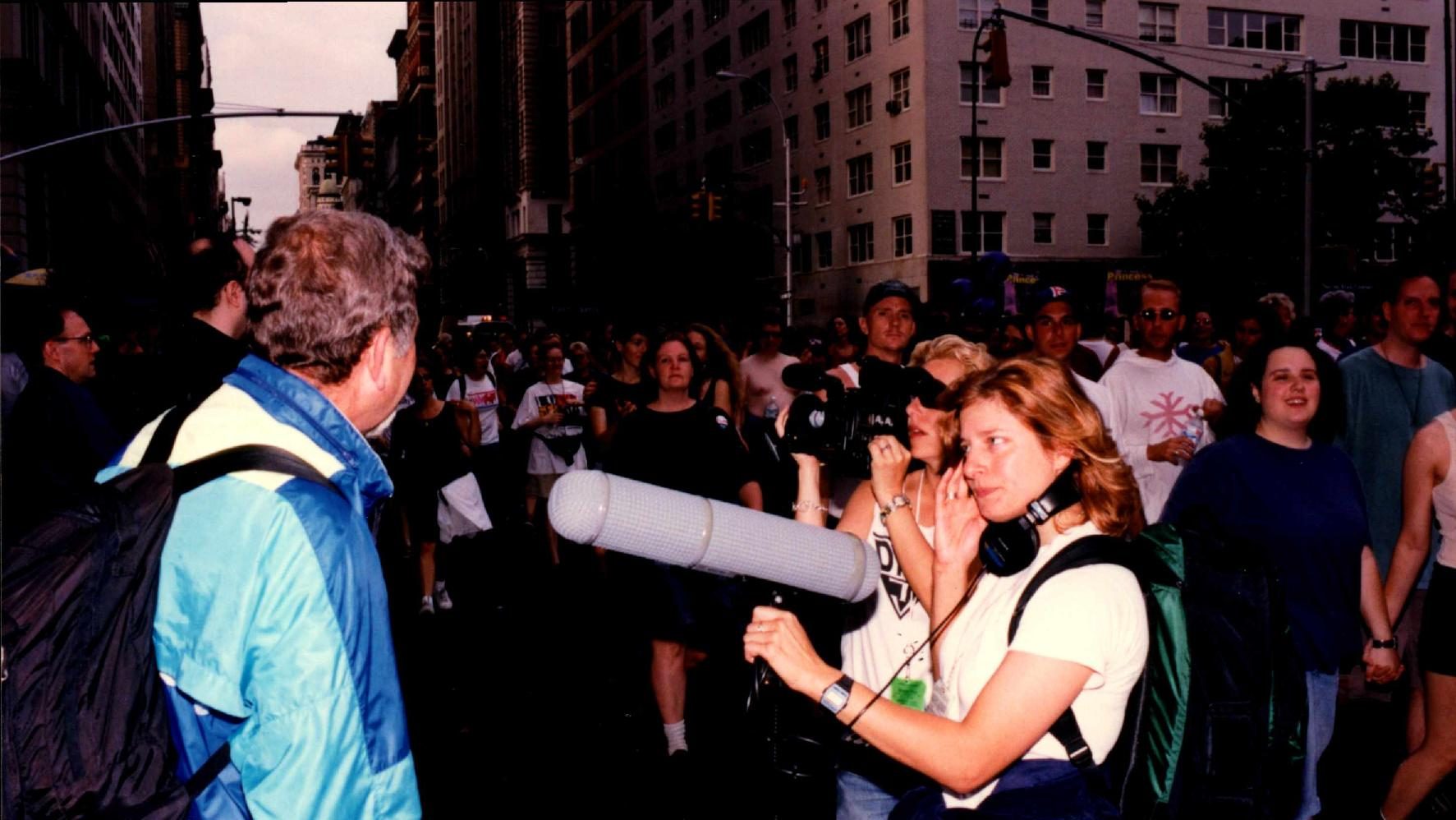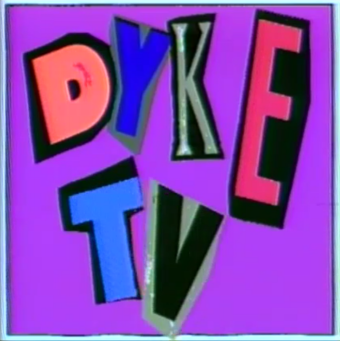Still am, actually.
This project, created for ARX 340: Taking the Archives Public, comes from a deeply personal place. Amid a tumultuous year, this project has provided much solace and inspiration. To see the work of lesbian activists just one or two generations older than me creating their own unique aesthetics, activist movements, and media spaces is to feel an incredible sense of possibility as to what I as a lesbian and as a member of a community can achieve.
In April of 2021, I was sitting in the Sophia Smith Collection’s Reading Room atop a cabinet full of finding aids, watching a Dyke TV episode from the early 2000s on a large television atop one of those tall roller carts. I was filming the episode on my phone, because it has not yet been digitized. AIDS activist and Dyke TV producer Valerie Walker was introducing a segment on a lesbian health clinic in New York. As I watched the monitor through my phone screen, I could see myself reflected in the television monitor, just over the shoulder of these lesbian activists. Maybe it’s a little on the nose, but it clicked for me in that moment, why this project was valuable to me.
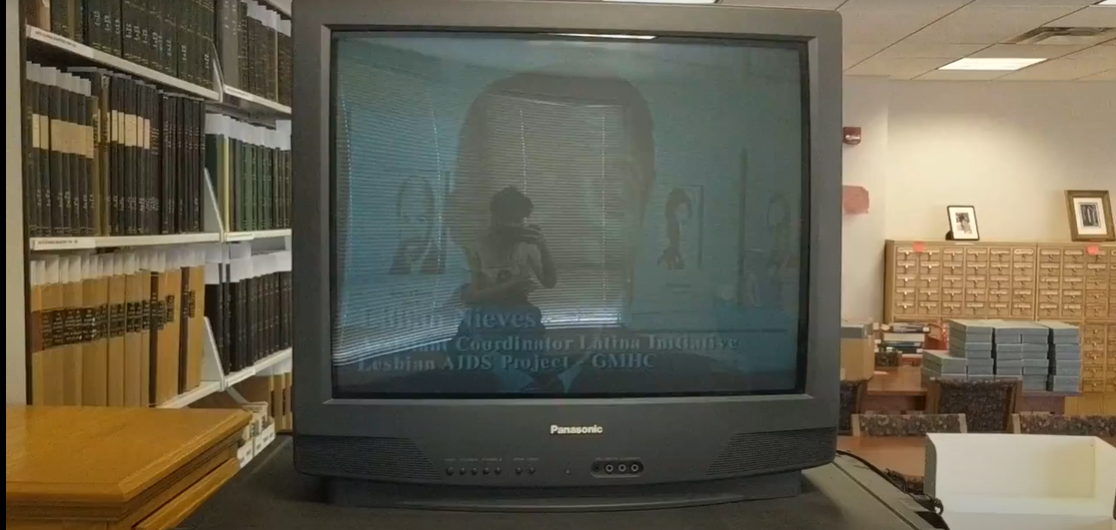
Beyond Visibility: Dyke TV and Lesbian Health Activism is a snapshot of the incredible video activism of Dyke TV, ACT UP, and the Lesbian Avengers. This project seeks to uncover the ways the lesbian community organized around public health in the years following the peak of the AIDS epidemic and to establish the ways gay and lesbian groups used video work to claim and create public space for themselves in this era.
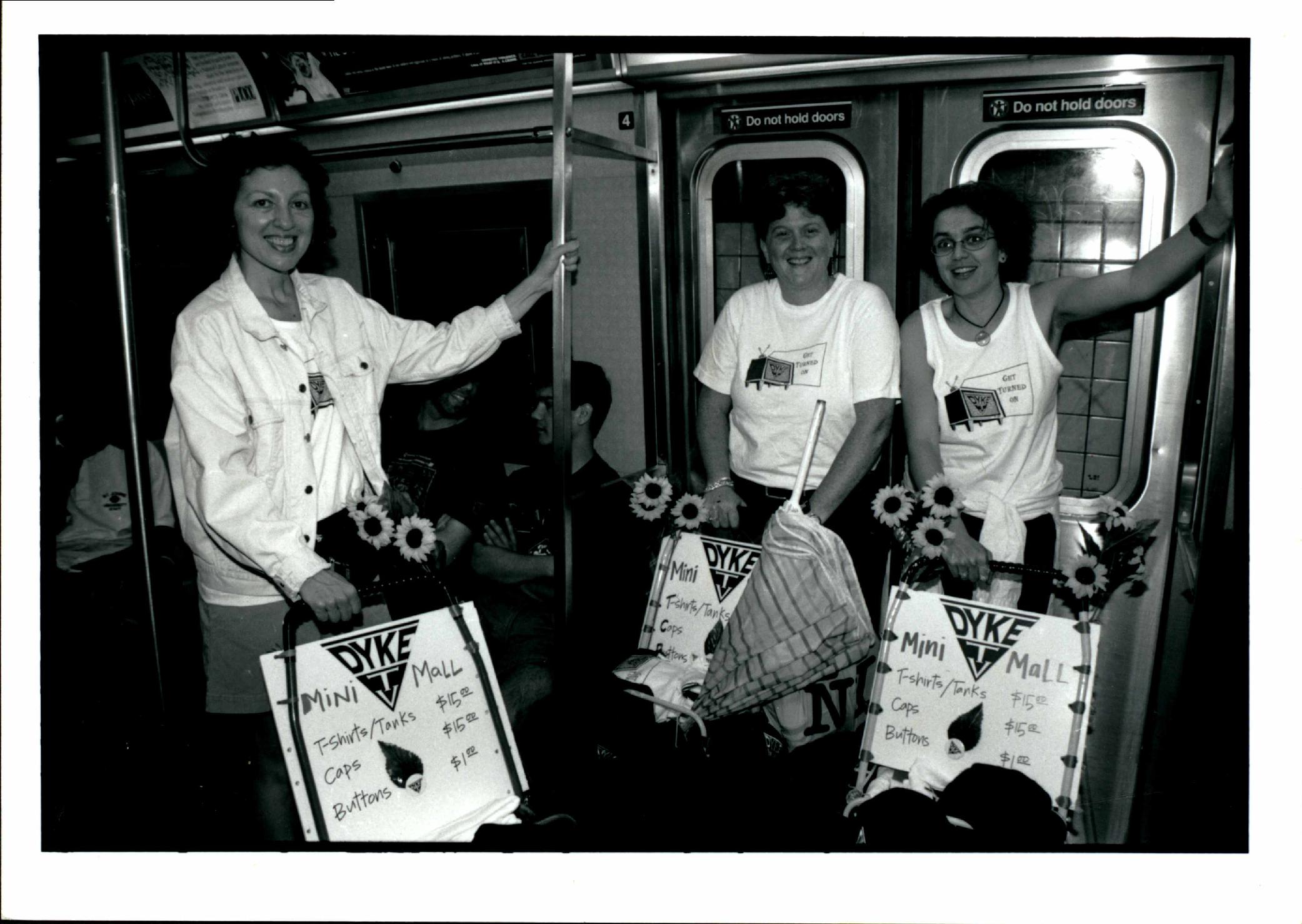
When the powers that be fail to provide for you, get loud, get angry, get your community together and provide for each other in the meantime. Over the 12 years (1993 – 2005) Dyke TV was on air, it was not just a news program; it was a way for lesbians to find community and connection around even in the hardest of times.
The coronavirus pandemic of the past year has had a markedly different path in the United States than the AIDS epidemic. (This is perhaps no surprise, given that COVID-19 is not disproportionately affecting queer people of color and IV drug users. Now, the same process of using mRNA to create the COVID-19 vaccine may be used to finally develop an HIV vaccine.) Still, as vaccines move us closer toward a “new normal” it feels valuable to consider the ways that LGBTQ activists created unique models of community care and support during the uncertainty of the AIDS crisis.
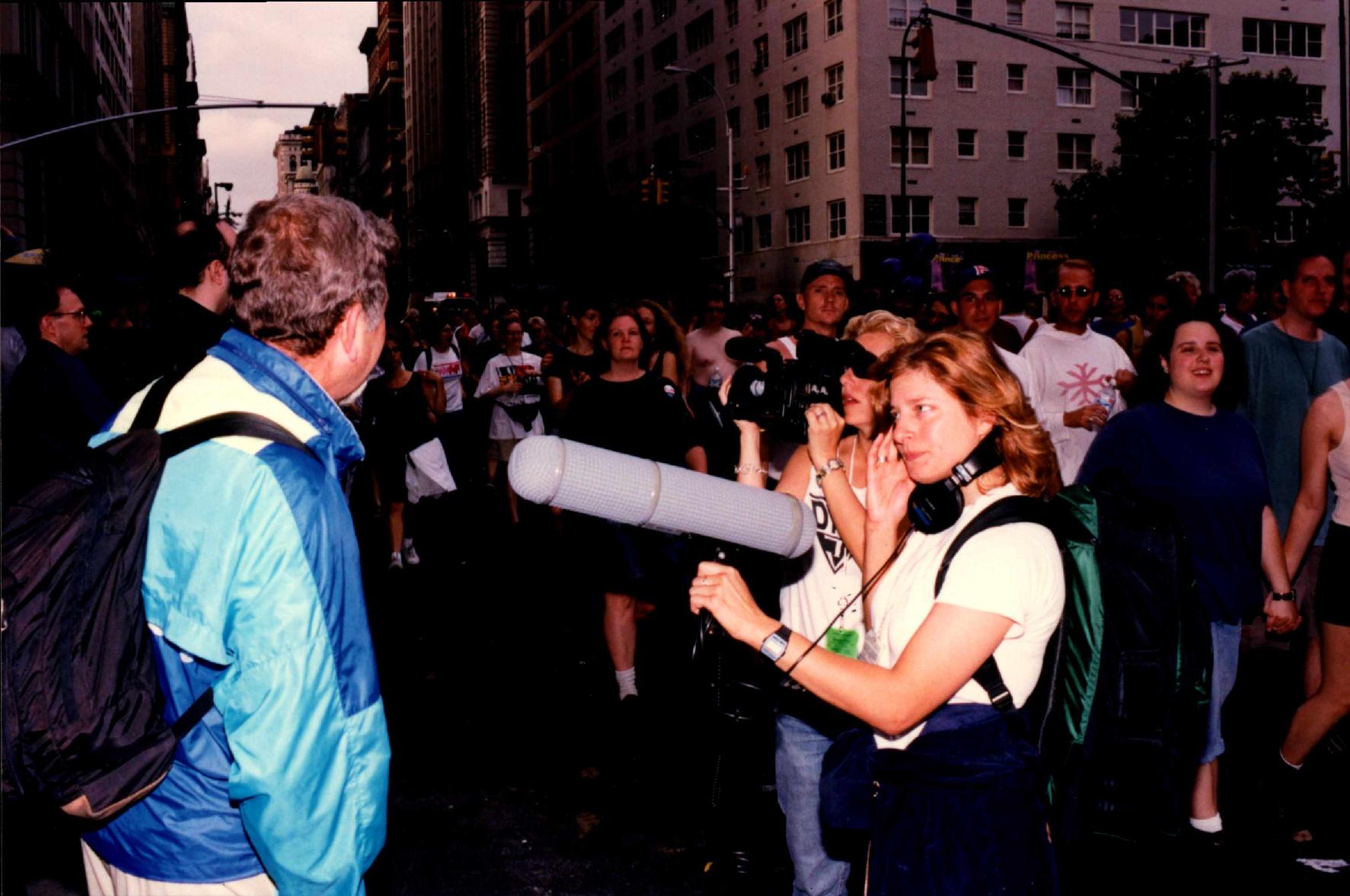
I am enormously grateful to the staff at the Sophia Smith Collection and Smith College Archives, particularly Mary Biddle and Kate Long — without their help, this project would be very boring! I’d also like to thank Kelly Anderson, Travis Grandy, and Mario Valdebenito Rodas for their help with all parts of this project and bringing this WordPress to life.
And of course, I’d like to thank all the dykes featured on these pages and all the dykes agitating for good in the world. Nearly all Dyke TV episodes were stored on video cassettes that one day will suffer from magnetic decay or grow mold and become unwatchable. But the impact of the work Dyke TV put into the world will live on. As technologies change, this website will one day become unusable, too. But for now, let this be a tribute to these activists, their work, and the work that remains to be done.
